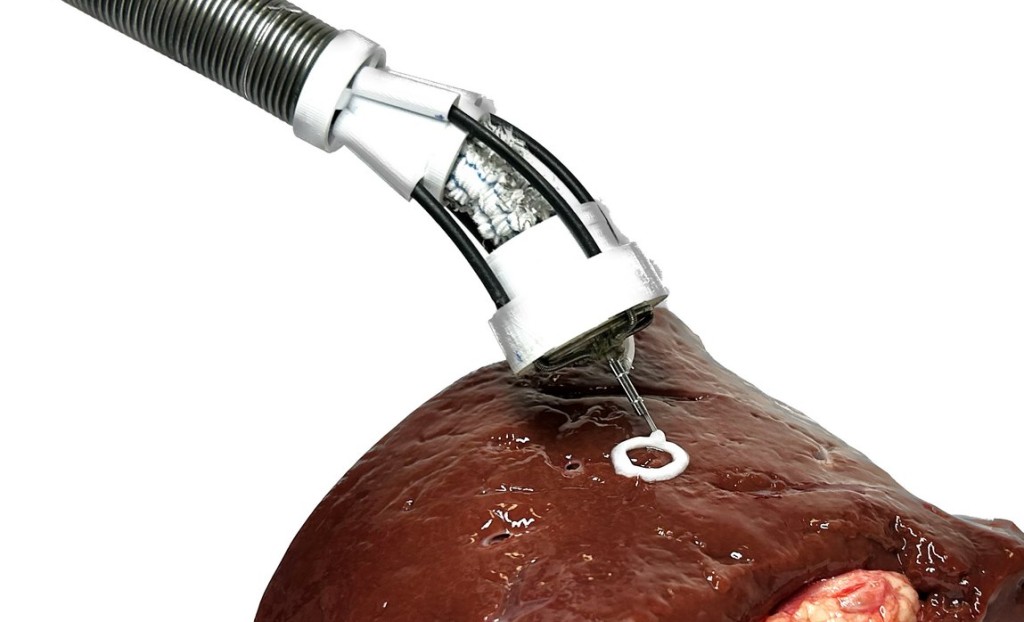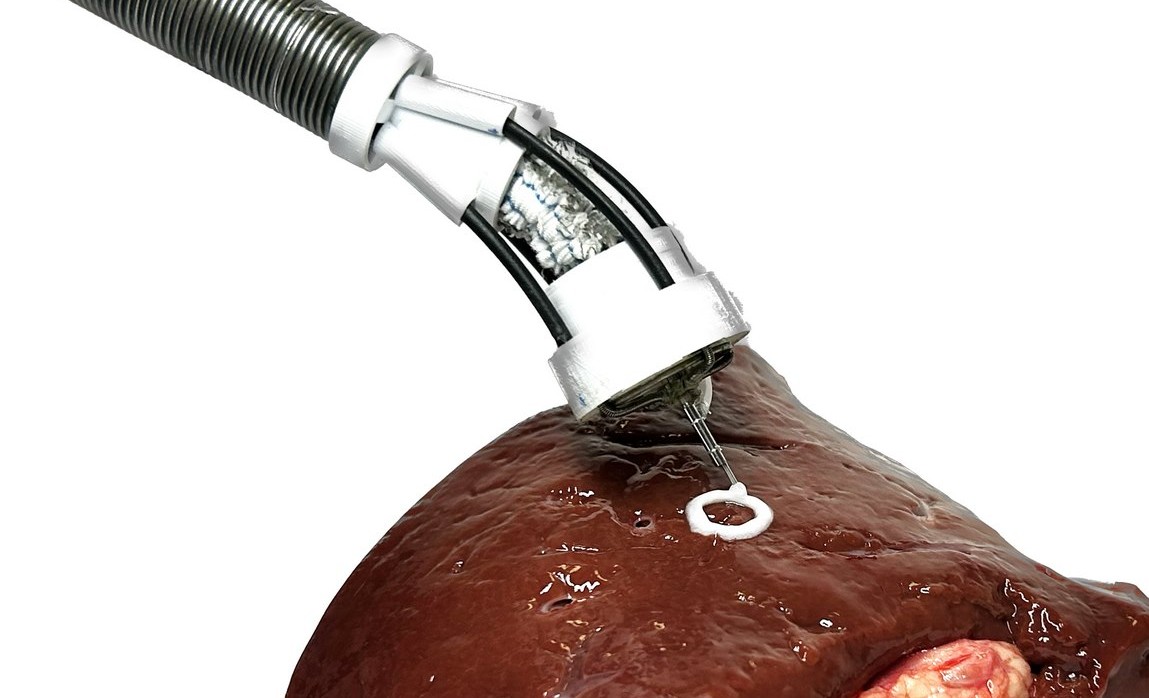
It’s wild what they can do with robots these days. A new device that acts as a three-in-one surgical tool can also 3D-print living cells inside the human body in real-time.
Developed by engineers from Univ. of New South Wales, Sydney, the device includes a water jet, scalpel, and endoscopic camera.
3D bioprinting is a process whereby biomedical parts are fabricated from so-called “bioink” to form natural tissue-like structures.
Bioprinting is predominantly used for research purposes such as tissue engineering and in the development of new drugs, and normally requires the use of large 3D printing machines to produce cellular structures outside the living body.
The research team tested the device inside an artificial colon where it was able to traverse through confined spaces before successfully 3D printing.
The new research from UNSW Medical Robotics Lab, led by Dr. Thanh Nho Do and his Ph.D. student, Mai Thanh Thai, is in collaboration with other researchers from UNSW.
Their work has resulted in a tiny flexible 3D bioprinter that has the ability to be inserted into the body just like an endoscope and directly deliver multilayered biomaterials onto the surface of internal organs and tissues.
The proof-of-concept device, known as F3DB, features a highly maneuverable swivel head that prints the bioink, attached to the end of a long and flexible snake-like robotic arm, all of which can be controlled externally.
The research team says that with further development, and potentially within five to seven years, the technology could be used by medical professionals to access hard-to-reach areas inside the body via small skin incisions or natural orifices.
SURGERY TOOLS EXPANDED: Wasps Have Inspired an Innovative New Tool for Surgery
Dr. Do and his team have tested their device inside an artificial colon, as well as 3D printing a variety of materials with different shapes on the surface of a pig’s kidney.
“Existing 3D bioprinting techniques require biomaterials to be made outside the body and implanting that into a person would usually require large open-field open surgery which increases infection risks,” said Dr. Do.
“Our flexible 3D bioprinter means biomaterials can be directly delivered into the target tissue or organs with a minimally invasive approach. This system offers the potential for the precise reconstruction of three-dimensional wounds inside the body, such as gastric wall injuries or damage and disease inside the colon.”
MORE MEDICAL MIRACLES: Aussie Dad Recovers from Brain Tumor, Stroke, and Coma in 5-Month ‘Miracle’ to Spend Christmas at Home
The next stage of development for the system, which has been granted a provisional patent, is in vivo testing on living animals to demonstrate its practical use.
The researchers also plan to implement additional features, such as an integrated camera and real-time scanning system which would reconstruct the 3D tomography of the moving tissue inside the body.
WATCH the robot in action…
SHARE This Stunning Medical Breakthrough With Your Friends…




















